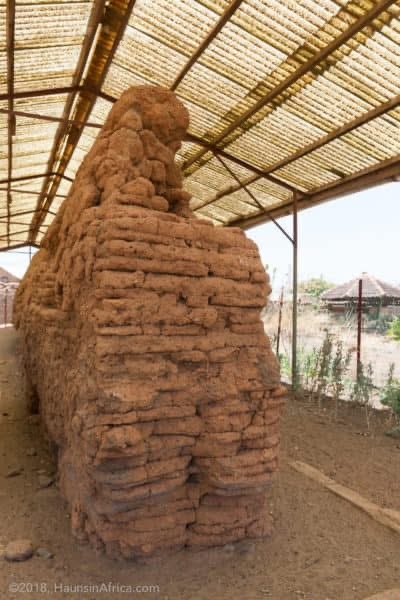Standing as one of many relics of the slave trade visible in the Upper West Region is the Gbollu Defence Wall, built as a defence wall to protect the community then marked by violent raids led by warlords Babatu and Samori in the late 18th century.
Two walls were built, its construction led by one Gwollu Koro Limann. One wall was to protect homes, while the other encircled farms and bodies of water. It is believed to have been erected over a period of up to 25 years, but neither was completed. They were abandoned when the Atlantic slave trade was abolished.
Gwolu is located 70km from Wa, the capital of the Upper West Region. In the late 1890s, it was not a pleasant place to stay, let alone visit. People constantly fled the activities of the notorious slave raider Babatu Zato.
Babatu had been driven southward in 1896 to the vicinity of Wa by French troops led by Lieutenants Voulet and Chanoine who had been requested by Hamaria, a Gurunsi leader, to intervene to forestall the raider’s attacks on their villages. The slave raider had been wreaking havoc from the 1850s in Navrongo and the surrounding areas. Gwollu was named after the 19th century paramount chief Gwollu (or Gbollu) Kuoro Tanjia Limann, who had the double circular wall built around the local community as a defense against the raids of Babatu.
Babatu Zato was a Zabarima slave raider whose notoriety spread throughout the Northern Territories in the second half of the 19th century. He originally hailed from Indunga in present day Niger, and carried out his conquests with Hausa, Fulani, Mossi and Grunshie fighters. The entire area stretching from Ouagadougou in the north to the present day Upper East and even parts of the Northern Region of Ghana fell under his sword.
All villages which sought to avoid Babatu’s raids had to pay heavy tributes in cowries, cattle and horses. Babatu Zato was ultimately defeated at the Battle of Fiisa at Fiisa in Builsaland by the warriors of Builsa, thus ending a two-decade long career.
The Builsas were helped by the Terzug shrine (the shrine of the god of war) which they hid in a sacred grove at Fiisa from the slave raiders while fighting fiercely and savagely against the raiders who they abhorred. Sacred groves are traditional nature reserves created around shrines which shelter medicinal herbs and rare, near extinct plants, among many exotic species.
The Fiisa and Jaagbo shrines and the Kalvogu sacred grove are the best known of sacred groves in the Northern Region. When the Builsas were attacked by the slave raider, they were able to turn him back. Around 1905, Ombo Mountain, named after the village at its foot, was one of the places where local people successfully held off the fighters of Babatu only weeks before his final defeat.
That final defeat of Babatu Zato is celebrated annually by the Builsa tribe with the elaborate Feok festival (5) in December. The defeat also gave to the Builsas a sense of identity, solidarity, unity and purpose in place of mistrust, petty rivalry and intra-clan conflicts which made them vulnerable and easy prey for the slave raider. Following his defeat, Babatu fled the Builsa area and later took refuge at Yendi in the Northern Region; there he eventually died. Babatu Zato was buried near his house at Yendi.
Today, only small sections of the Gbollu defense wall can be seen at Gwolu (1, 2, 3, 4). Several slave routes led through this region, and the preserved sections of mud wall are some of the few pieces of evidence of organised resistance to slave trading in the world. Builsas are known to be descendants of amalgamated ethnic groups including a Mamprusi Prince Atuga from Nalerigu, a Gur-speaking Kasena blacksmith known as Akana from Kurugu near Dakai in Burkina Faso, who built Kanjag Pung (tanggbain), and some indigenous Koma people (‘kom dem’, people of Kom) whom both Atuga and Akana met on the land.
Jirapa, which hosts the best hotel in the vicinity is nearby and is actually an experience to explore.
This year, commit to visiting more attractions in the Sahel northern part of Ghana. It holds much fascination!










